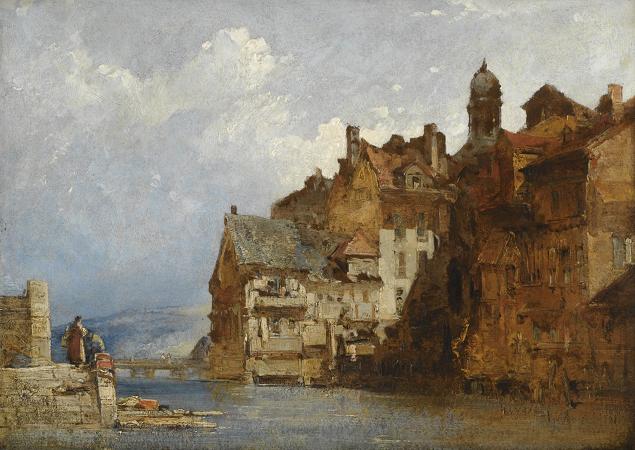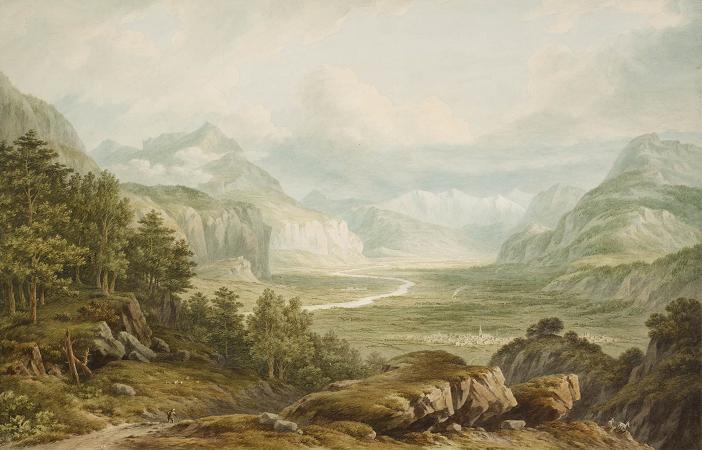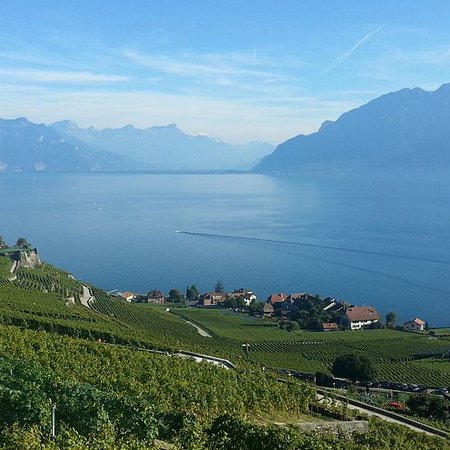Rhone River. The Rhône is one of the major rivers of Europe and has twice the average discharge of the Loire, rising in the Rhône Glacier in the Swiss Alps at the far eastern end of the Swiss canton of Valais, passing through Lake Geneva and running through southeastern France. At Arles, near its mouth on the Mediterranean Sea, the river divides into two branches, known as the Great Rhône and the Little Rhône. The resulting delta constitutes the Camargue region. The name Rhone continues the name Latin: Rhodanus in Greco-Roman geography. The Greco-Roman as well as the reconstructed Gaulish name is masculine, as is French le Rhône. This form survives in the Spanish/Portuguese and Italian namesakes, el/o Ródano and il Rodano, respectively. German has adopted the French name but given it the feminine gender, die Rhone. The original German adoption of the Latin name was also masculine, der Rotten; it survives only in the Upper Valais. In French, the adjective derived from the river is rhodanien, as in le sillon rhodanien, which is the name of the long, straight Saône and Rhône river valleys, a deep cleft running due south to the Mediterranean and separating the Alps from the Massif Central. Before railroads and highways were developed, the Rhône was an important inland trade and transportation route, connecting the cities of Arles, Avignon, Valence, Vienne and Lyon to the Mediterranean ports of Fos-sur-Mer, Marseille and Sète. Travelling down the Rhône by barge would take three weeks. By motorized vessel, the trip now takes only three days. The Rhône is classified as a Class V waterway for the 325 km long section from the mouth of the Saône at Lyon to the sea at Port-Saint-Louis-du-Rhône. Upstream from Lyon, a 149 km section of the Rhône was made navigable for small ships up to Seyssel. As of 2017, the part between Lyon and Sault-Brénaz is closed for navigation. The Saône, which is also canalized, connects the Rhône ports to the cities of Villefranche-sur-Saône, Mâcon and Chalon-sur-Saône. Smaller vessels can travel further northwest, north and northeast via the Centre-Loire-Briare and Loing Canals to the Seine, via the Canal de la Marne à la Saône to the Marne, via the Canal des Vosges to the Moselle and via the Canal du Rhône au Rhin to the Rhine. The Rhône is infamous for its strong current when the river carries large quantities of water: current speeds up to 10 kilometres per hour are sometimes reached, particularly in the stretch below the last lock at Vallabrègues and in the relatively narrow first diversion canal south of Lyon. The 12 locks are operated daily from 5:00 a.m. until 9:00 p.m. All operation is centrally controlled from one control centre at Châteauneuf. Commercial barges may navigate during the night hours by authorisation. The Rhône rises as an effluent of the Rhône Glacier in the Valais, in the Swiss Alps, at an altitude of approximately 2,208 metres. From there it flows south through Gletsch and the Goms, the uppermost, valley region of the Valais before Brig. Shortly before reaching Brig, it receives the waters of the Massa from the Aletsch Glacier. It flows onward through the valley which bears its name and runs initially in a westerly direction about thirty kilometers to Leuk, then southwest about fifty kilometers to Martigny. Down as far as Brig, the Rhône is a torrent; it then becomes a great mountain river running southwest through a glacier valley. Between Brig and Martigny, it collects waters mostly from the valleys of the Pennine Alps to the south, whose rivers originate from the large glaciers of the massifs of Monte Rosa, Dom, and Grand Combin. At Martigny, where it receives the waters of the Drance on its left bank, the Rhône makes a strong turn towards the north. Heading toward Lake Geneva, the valley narrows, a feature that has long given the Rhône valley strategic importance for the control of the Alpine passes. The Rhône then marks the boundary between the cantons of Valais and Vaud, separating the Valais Chablais and Chablais Vaudois. It enters Lake Geneva near Le Bouveret. On a portion of its extent Lake Geneva marks the border between France and Switzerland.
more...



